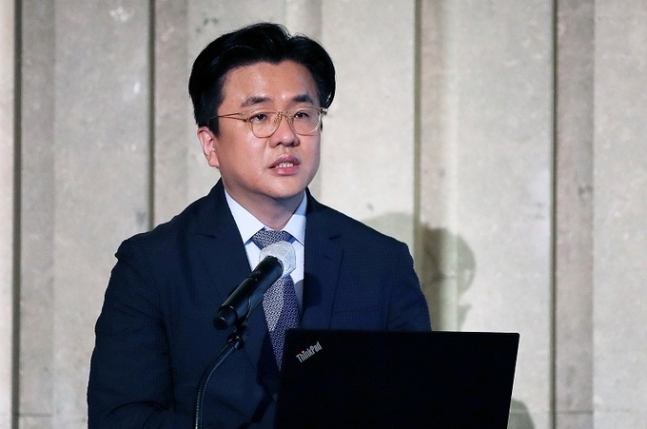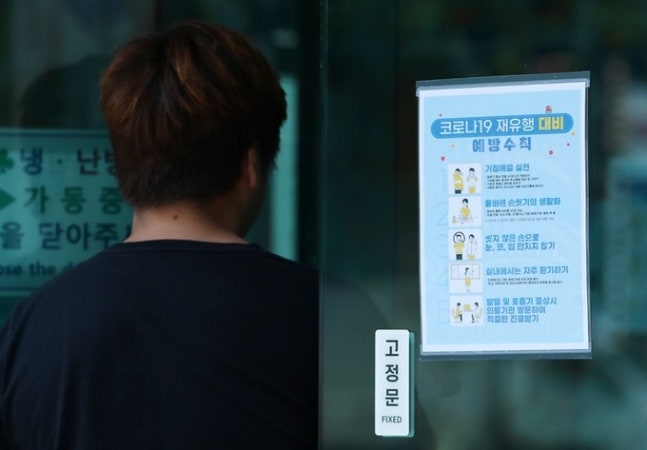Professor Lee Jaegap of Hallym University Kangnam Sacred Heart Hospital mentions ‘pressure’ on ‘The Absence of Primary Care Physicians’ on SBS Radio, ,
 |
| Professor Lee Jaegap of the Department of Infectious Diseases at Hallym University Kangnam Sacred Heart Hospital. Yonhap News |
, ‘ \xa0’, , ‘Amid the resurgence of the spread of COVID-19, Professor Lee Jaegap of the Department of Infectious Diseases at Hallym University Kangnam Sacred Heart Hospital recommended a short break of three to four days. ‘, , ‘ \xa0’, , ‘ On the morning of the 16th, during an appearance on SBS Radio’s ‘Kim Tae Hyun’s Political Show,’ Prof. Lee responded to a question from the host asking, “If you have COVID-19, how long should you self-isolate?” He replied, “Virus shedding is high for 3-5 days,” and mentioned that “It’s best to take at least 3 days off and avoid contact with people.” He added, “If your company allows, it would be best to rest for 5 days.” ‘, , ‘ \xa0’, , ‘ Professor Lee stated, “Many companies require employees to come to work even when they have cold symptoms, so they are hardly able to rest.” He emphasized that a culture should be established where individuals can take sick leave when needed, and this aspect should be emphasized in labor relations as well. He suggested that companies should recognize the need for sick leave, including sick pay, when employees are unwell. When asked about getting vaccinated again, he replied, “For those aged 65 and above, getting the flu shot and the COVID-19 vaccine together should suffice.” ‘, , ‘ \xa0’, , ‘ Despite COVID-19 being classified as the lowest grade 4 in terms of infectious diseases and the obligation to quarantine no longer being in effect, Professor Lee emphasized the importance of taking sufficient rest. Health authorities recommend quarantine until 24 hours after major symptoms such as cough and fever have improved. ‘, , ‘ \xa0’, , ‘ Although wearing masks is not mandatory, Professor Lee mentioned, “It is important for those who need to wear masks or are in situations where masks must be worn to do so properly,” and stressed the importance of wearing masks for high-risk groups as infection can be very risky without them. According to authorities, although wearing masks is not mandatory at medical institutions such as nursing homes or nursing care facilities for the elderly, it is recommended that masks be worn if there are symptoms. ‘, , ‘ \xa0’, , ‘ The Korea Disease Control and Prevention Agency plans to strengthen guidelines recommending mask-wearing for both staff and visitors at medical institutions and infection-prone facilities, and some medical institutions and infection-prone facilities already guide visitors to wear masks. ‘, , ‘ \xa0’, , ‘ Responding to the host’s concern that the medical system may not be able to handle the absence of primary care physicians, Professor Lee pointed out that there is significant pressure due to the lack of hospital beds preventing COVID-19 patients from being admitted. ‘, , ‘ \xa0’, ,
 |
| COVID-19 prevention guidelines posted at the entrance of a building in downtown Seoul on the 13th. News1 |
, ‘ \xa0’, , ‘ Especially in light of reports that the supply of drugs supplied to pharmacies and hospitals in the midst of the spread of COVID-19 is only about one-sixth of the demand, Professor Lee diagnosed the situation as a failure in predicting demand, stating, “Last winter, the epidemic was not severe, so there were leftover drugs, and it was predicted that the drugs would be available until November this year.” He predicted that there will be a shortage of drugs for the next 2-3 weeks. ‘, , ‘ \xa0’, , ‘ According to the status of COVID-19 drug supply received from the Disease Control Department by lawmaker Han Ji-ah’s office, the total number of drug applications from pharmacies and medical institutions nationwide in the first week of this month was 198,000, but the supply was only 33,000, at a rate of about 17%. Specifically, the number of applications for oral medications such as Paxlovid and Lagevrio was 193,000, while the application for intravenous injection medication Becluri Juice was 5,000. However, the supply was 30,000 units for oral medications and 3,000 units for injections, resulting in a supply rate of 15.5% when only oral medications, which most patients receive, are considered. ‘, , ‘ \xa0’, , ‘ The usage of drugs increased from 1,272 units in the fourth week of June to about 42,000 units last month, a more than 30-fold increase, highlighting the need for more drug supply. The Disease Control Department plans to quickly introduce drugs within this month through active procurement of additional quantities and anticipates smooth drug supply two weeks later. ‘, ,
,

